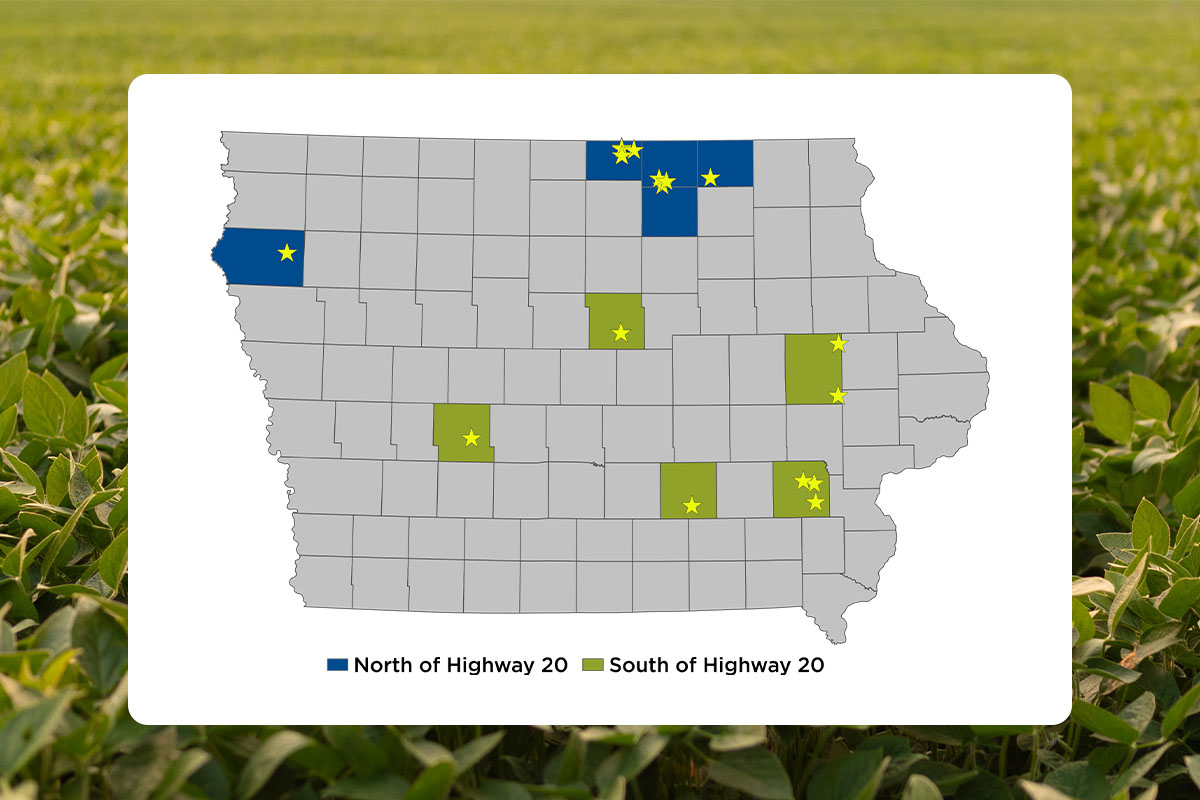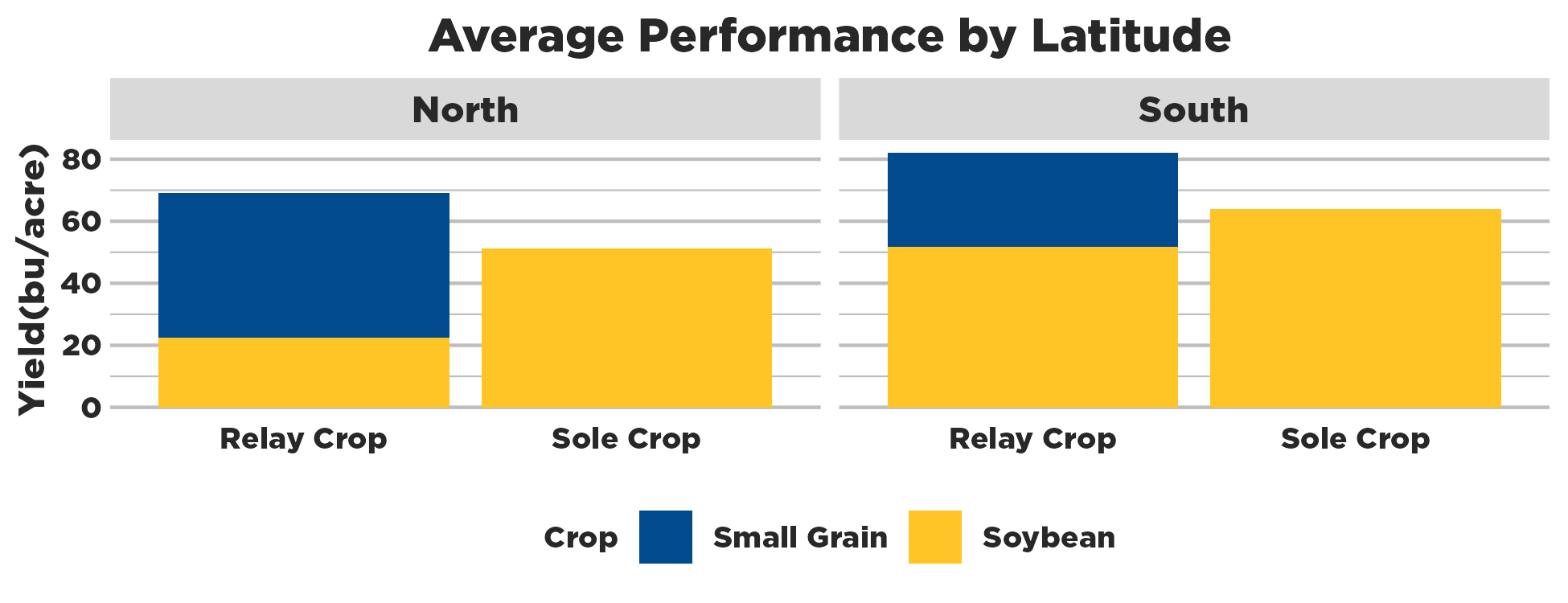
(Photo: Iowa Soybean Association / File Photo)
One acre, three crops, two years: Relay cropping in Iowa
August 5, 2025 | Lucas De Bruin, CCA
Key takeaways:
- Relay cropping is more successful south of Highway 20.
- Relay cropping is more profitable when the small grain is sold for cover crop seed.
- RCFI is gaining insights in this trial on fertilizer rates, row spacing and planting dates.
In contrast to double cropping, relay cropping entails the management of two crops grown together, with each crop harvested at its peak maturity. Most frequently, relay cropping involves a cereal grain and soybeans. The goals are multi-faceted, focusing on economic return and soil quality. In improving soil quality, the emphasis is on soil structure, erosion and nutrient sequestration.
Iowa Soybean Association's (ISA) Research Center for Farming Innovation (RCFI) is gaining insight during this project into optimal fertilizer rates, row spacing and ideal planting dates for both crops to maximize return on investment. While growing the crops at the same time, it is important to consider each crop's needs while monitoring and minimizing any negative effect on the other crop.
All current research except one location has been focused on cereal rye with the balance exploring wheat. There is a greater chance of success with relay cropping south of Highway 20. Relay cropping reduced soybean yields by 56% north of Highway 20, and by 19% when south of Highway 20.

Balancing crop needs
Managing two crops increases competition for nutrients and moisture. A fertility plan is essential to meet the small grain's needs, which differ from soybeans throughout the season.
Small grains are grasses and therefore respond well to nitrogen. The recommended rate is 30 to 50 pounds of nitrogen per acre. Higher nitrogen rates may cause lodging in the small grain and reduced soybean nodulation.
Late-season rains after the small grain harvest can boost soybean yields.
One early-season benefit of including a relay crop is better water infiltration. More living roots in the soil enhance infiltration rates, helping reduce ponding and allowing for more fieldwork days in the spring.
Improved infiltration also supports greater water-holding capacity in the soil, enabling crops to better withstand dry conditions. The small grain will also actively utilize the available moisture for growth and can help reduce excess moisture. However, the small grain can also out-compete soybeans for water in drought conditions, harming yield.
Row spacing considerations
Row spacing affects light interception and the effect of equipment traffic damage.
Combines with narrow tires and soybeans planted in 30-inch rows parallel to the small grain harvest can help decrease the damage to the soybeans during the small grain harvest. The use of skip rows or row indexing for where tires will be driven can also further protect the soybean plants.
Early canopy of the small grain will increase overall light interception, reducing weed pressure. After small grain harvest, the soybeans will benefit from full sunlight and begin to rapidly grow to fill the row. Soybeans within relay cropping are often slightly shorter but branching and pod numbers are increased.
Managing for profit
Although soil quality benefits from relay cropping, is the practice profitable?
According to ISA trial data, the profitability of the relay cropping system varied depending on how small grains were marketed. When the small grain was sold as a commodity at $5 per bushel, relay cropping was the more profitable system in 47% of cases. However, when the grain was marketed as cover crop seed at $10 per bushel, relay cropping was more profitable 95% of the time, assuming soybeans were sold at $10 per bushel. These success rates are based on how often relay cropping outperformed the alternative system in profitability, using ISA data to compare outcomes under the two pricing scenarios.
There is potential to increase revenue by relay cropping, but market access is currently a limiting factor. The largest avenue to use the seed grown is as cover crop seed, whether that be used on the same farm it came from or cleaned and sold to others. Additional opportunities are currently limited to areas that have traditional or specialty markets for small grains.
For optimal relay cropping, planting small grains and soybeans earlier is key.
The earlier the small grain can be planted, the better chance of strong establishment and maximizing the tillering, which maximizes seed production.
Planting soybeans before the small grain begins stem extension (first node), will reduce wheel traffic damage to the small grain, while also maximizing the soybean yield potential.
Written by Lucas De Bruin.
Back